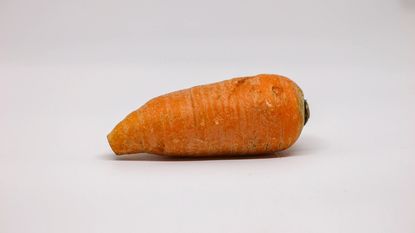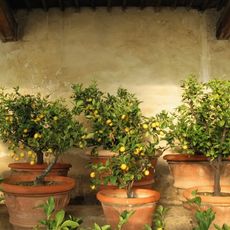Oxheart Carrot History And Info


Looking at the produce section of the supermarket, you'd think there's only one kind of carrot: long, orange, and perfectly tapered. I guess there are two types if you want to count baby carrots. Once you start growing your own carrots, though, you discover that there's a whole world of carrots out there, and it's wildly diverse, especially when it comes to types of heirloom carrots. Beyond orange, carrots come in purple, red, yellow, white, and even black. And their shapes and sizes are just as varied. Case in point: the Oxheart carrot.
History of Oxheart Carrots
The Oxheart carrot, also called the Guérande carrot, was first developed in Nantes, France, in the 1870s and introduced to the United States a decade later. Once you've seen one, you know how it got its name. This carrot is massive, usually growing to one pound (.45 kg). And instead of the long, slightly tapered shape we're accustomed to, it forms a big, chunky, heart shape that's no more than 6 inches long but often as much as 5 inches wide. In spite of this, it rarely gets woody. The most popular way to prepare it is in soups or stews, where a single specimen will get the job done. Basically, these are the meat of the carrot family.
How to Grow Oxheart Carrot Plants
Because of their short and stocky shape, Oxheart carrot plants are great for heavy or rocky soils that might thwart longer varieties. Sow your seeds directly outside as soon as the soil can be worked. Plant seeds at a depth of ¼ inch (0.6 cm.) spaced half an inch (1.3 cm.) apart. Press the soil down firmly over the seeds and keep them moist until they emerge. Germination may be slow and a little unreliable, so don't lose heart but don't expect any miracles. Plant a number of seeds higher than the number of carrots you want and you should be fine. When all the seedlings seem to have emerged, thin them to every 2-4 inches (5-10 cm.) to allow them room to widen.
Gardening tips, videos, info and more delivered right to your inbox!
Sign up for the Gardening Know How newsletter today and receive a free download of our most popular eBook "How to Grow Delicious Tomatoes."

The only child of a horticulturist and an English teacher, Liz Baessler was destined to become a gardening editor. She has been with Gardening Know how since 2015, and a Senior Editor since 2020. She holds a BA in English from Brandeis University and an MA in English from the University of Geneva, Switzerland. After years of gardening in containers and community garden plots, she finally has a backyard of her own, which she is systematically filling with vegetables and flowers.
-
 How To Grow Garden To Table: A Guide For Home Cooks
How To Grow Garden To Table: A Guide For Home CooksWhat could be better than a meal that comes directly from garden to table? Show off your gardening and culinary skills with the very freshest food.
By Bonnie L. Grant
-
 Want a Backyard Mini Orchard? Create Your Own Container Orchard
Want a Backyard Mini Orchard? Create Your Own Container OrchardEasier to care for in small spaces, a backyard mini-orchard makes sense for busy gardeners and juicy fruit is the reward.
By Teo Spengler